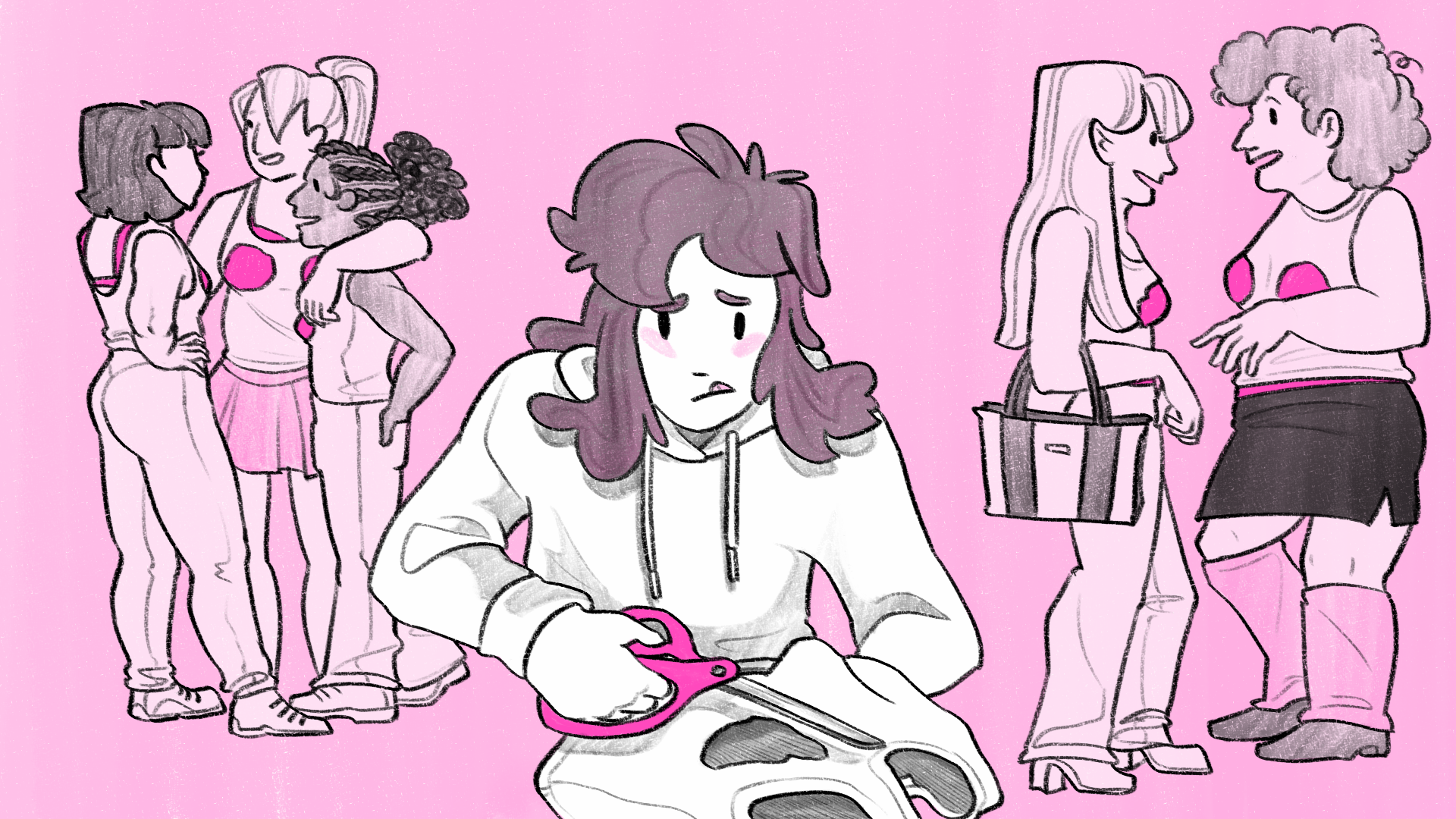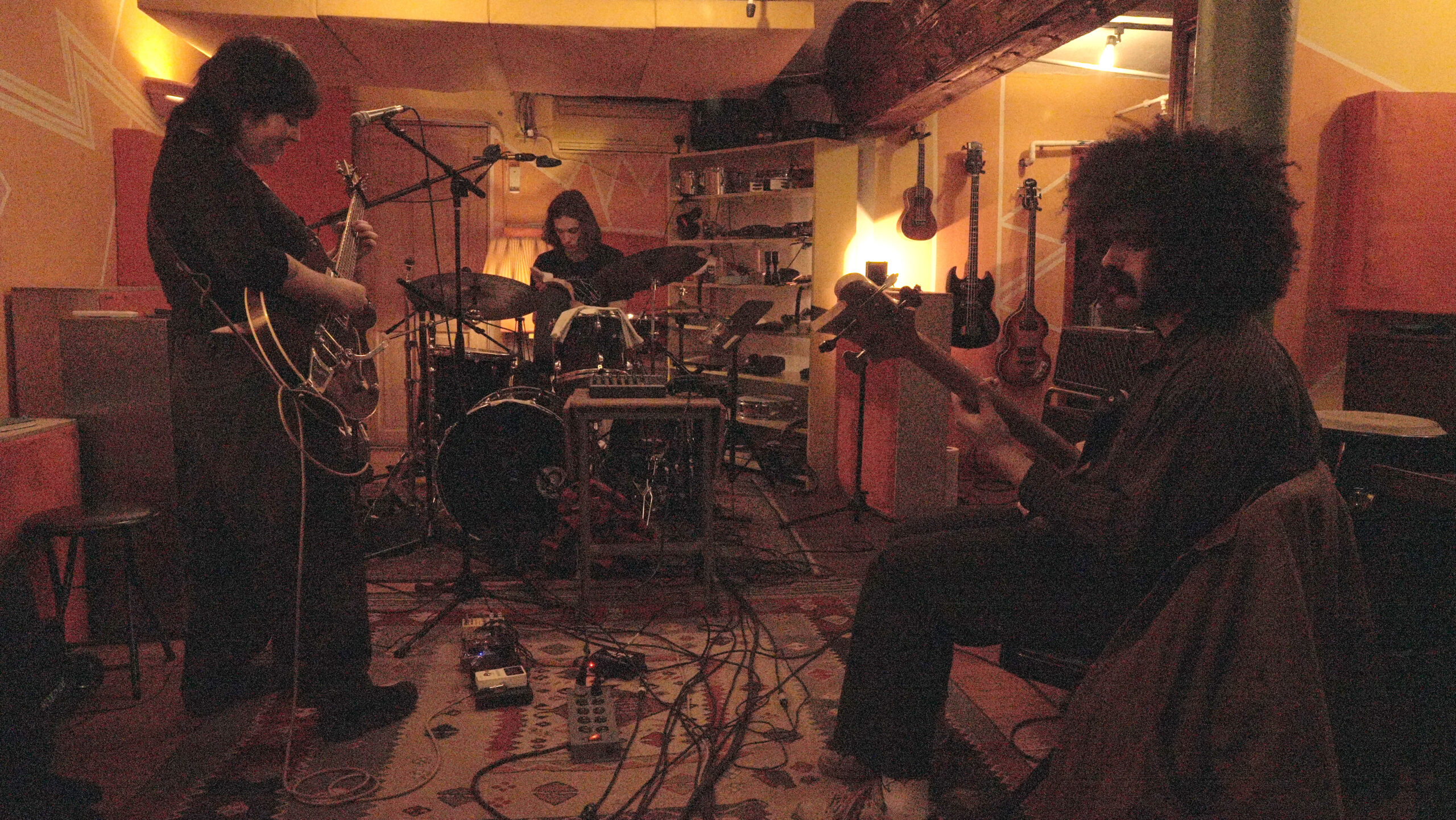At the Vera List Courtyard, just a stone’s throw away from the busy intersections and fast-paced crowds of Sixth Avenue, the middle of the day approaches. After a morning of classes, a group of students make their way through the revolving doors and walk to the nearby steps, where they set their bags down on the ground and take their seats. There, they begin their lunchtime conversations, discussing current events, social problems, student life. This environment, where an open exchange of ideas is welcome, is their sanctuary.
For decades, Eugene Lang College has held a curriculum focused on literature, psychology and history. However, those in the interdisciplinary science department emphasize that knowing the hard sciences — fields like biology, chemistry and physics — are also crucial for understanding social issues. And despite all the complex equations, periodic tables and scientific language, the discussions they have, from the classroom to the courtyard, are no different.
“Most undergraduate science programs just don’t work like the interdisciplinary science program,” said Andrew Zimmermann, a senior interdisciplinary science major at Lang. “The department has offered me a venue to explore science in a way that I am certain could not occur at the typical university.”
According to a report from the academic journal Science, by as early as 1919 nearly one-third of American universities offered classes that intertwined history and science. But in the past 14 years, those in Lang’s interdisciplinary science department have seen changes in the way science affects everyday life. With spikes in extreme weather, including wildfires, heat waves and hurricanes, communities around the world are being forced to change the way they live. Faculty members like associate professor Katayoun Chamany believe that now, more than ever, is the time to look at science in a more social lens.
“I definitely think science is an art form in itself,” said Chamany, the department’s founding faculty member. “It thrives on passion and gut instincts a lot more than some of us like to realize. And it all begins with a conversation.”
In addition to seminar-based discussions, Chamany added that students best understand the artistry of science through hands-on experience, both in laboratories and in the field. Interdisciplinary science students have been given credit-based opportunities to conduct research with programs like Harlem’s Children’s Project, EngenderHealth, and Doctors Without Borders.
For students like Brittany Fowle, who came to Lang unsure about her major, the discussions and hands-on experience instantly caught her eye. After walking into her freshman science seminar, featuring discussions about urban sprawl and climate change, she decided to major in environmental studies. Despite not majoring in interdisciplinary science, the classes she has taken through the department have helped her make more sense of the scientific world.
“[Lang] is very successful in giving qualitative characteristics to subjects that are traditionally quantitative,” said Fowle, a sophomore. “So many of the required readings are from today’s newspapers. We grapple with the same issues that our society is trying to figure out itself.”
In 2005, Bhawani Venkataraman, Assistant Professor of Chemistry and the Interdisciplinary Science Department Chair, was given an $82,000 grant for promoting “active learning,” a teaching method heavily focused on case studies and experimentation.
“There is an increasing need for such professionals,” said Venkataraman. “People who are not necessarily themselves the research scientists or policy makers, but who understand fundamental science, research methods, and their applications to informed policy and action.”
In April, Congress issued a series of public-sector budget cuts to science education initiatives. As a result, annual funding for the National Science Foundation has decreased by about $68 million, while subsidies for the Department of Education’s Office of Science and the National Institute of Health have been cut by about $310 million and $35 million, respectively. According to Katherine Denniston, director of undergraduate education for the NSF, in light of these spending reductions universities must continue pulling together their resources in order to keep science education alive.
“From the headlines, we are witnessing oil spills, climate change, hurricanes and so many natural disasters,” Denniston said. “Schools and governments must take responsibility and understand how these are affecting civics and economics. Places like The New School keep the humanities in touch, and we need more of that.”
At Sarah Lawrence College in Bronxville, New York, members of the environmental studies department are incorporating visual arts and design into the sciences, and hosting lectures featuring faculty from Parsons and Chicago’s The School of the Art Institute.
“There is a tremendous need for analytic and investigative environmental writing and artistic expression on contemporary problems,” Charles Zerner, professor of environmental studies at Sarah Lawrence College, said in a statement following their program’s development last year. “The role of the arts in creating… sustainable approaches to environmental problems cannot be underestimated.”
In recent years, similar interdisciplinary programs have been established nationwide, at institutions such as the University of California – Berkeley, State University of New York at Buffalo, and Bryn Mawr College in Pennsylvania.
As science education faces a crossroads in the years to come, those at Lang believe they are ready to expand their program. Once the 16-story University Center, located at 65 Fifth Ave., finishes construction in 2013, the interdisciplinary science department plans to open three more laboratories.
However, those involved with the program insist these changes will enhance the university’s focus on the sciences, not overwhelm it.
“Take a single course in interdisciplinary science, and you might find the way you think of science all together transformed,” added Zimmermann. “It has made me truly care about social issues, and has given me a sense that there is something I can contribute to issues that face people today.”
The department is currently offering sixteen seminars, including Science and Politics of Infectious Diseases; Energy and Sustainability; and Genes, Environment and Behavior. Next semester, classes such as Urban Public Health, Chemistry and the Environment, and Stem Cells and Social Justice will be added to the list of offered courses.
“Our job is to open the door more widely for students, to expose the different ways that they can see their art,” said Chamany. “Because maybe there isn’t only one right answer.”







Leave a Reply